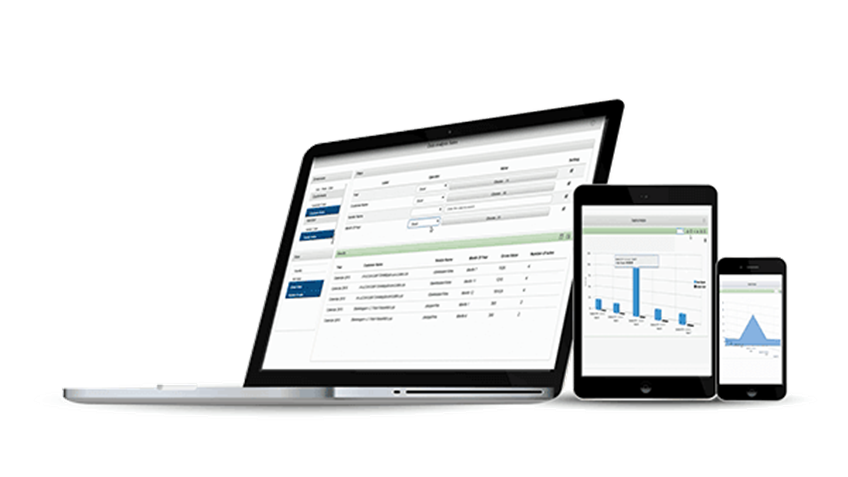Business and intelligence are two powerful words that create a company that brings profit. However, Business Intelligence is more than just a concept. Business intelligence (BI) is an umbrella term that includes the applications, infrastructure and tools, and best practices that enable access to and analysis of information to improve and optimize decisions and performance. It is a tangible thing, a software designed to find and analyse flaws in a data collection strategy of any business and then, to solve them to create a more efficient, knowledgeable company. Business intelligence applications can be used to create a hierarchical performance metric, which analyses how a business performs across several key sectors: time, cost, resources, scope, quality.
Most companies already analyse data, but it is often in the form of gathering several spreadsheets in Microsoft Excel. That can be very time-consuming, and the results are not always what one would expect for. Business Intelligence system allows companies to gain more thorough knowledge about the factors that affect day-to-day operations, thereby contributing to better decision-making in business. It provides the information and analysis focused on business problems that users are trying to solve, increasing their added value and quick solution of those problems.
Not only can Business Intelligence tools measure the performance, but they can also create company benchmarks. Benchmarking is the process of comparing one company's progress across certain important factors with industry best practices. Business intelligence can help a company rise far above industry benchmarks by increasing speed and decreasing costs. Benchmarking allows companies to quickly and easily spot the areas where they may be staying behind their competition.
Business knowledge discovery is a process that involves mining data from archives. Another major feature of Business Intelligence tools is to uncover forgotten or lost data and to better organize and manage this data as well as all future data. To have access to this additional data is crucial in helping a company avoid past mistakes and learn from previous strategies, leaders, and techniques.
Business Intelligence is just one of a number of applications that can be used collaboratively to increase business efficiency. By integrating data from different departments and streamlining communication between business elements, Business Intelligence makes a company more collaborative and efficient. One of the main benefits of business intelligence is that it encourages a company to be more mindful of its knowledge management - that is, where and how it stores all of the knowledge it accrues over decades of working in an industry.
The use of Business Intelligence tools help the printing industry companies to improve the performance, allowing access to multiple data sources in order to make sale and purchase analysis, as well as monitor the financial situation, view the movements of stocks and even help to understand what happens in the production area.
To put it in very simple terms Business Intelligence tools are the links between the printing industry company and the raw data. These tools create a system for gathering, translating, and presenting data in an actionable way which helps the printing industry companies make informed decisions based on business reality.
Keeping control and monitoring printing industry is an on-going challenge, if we consider the changing expectations of the market and results can start going the wrong direction. This is why data driven focus can help to overcome these challenges. Various problems regarding the stocks, sales, purchases are some of the major challenges that the printing houses face today. Scheduling and purchases remain the same since many years, the lack of factual, realistic data negatively influences the safety stock and impedes the responsible people for correct and knowledge based calculations.
Cutting excessive stocks and thereby the cost to maintain it, is one of the easiest changes a company can make using a Business Intelligence solution with a good dashboard that provides better visibility into stocks, enables the printing houses to make better decisions about what to order and when so goods do not stay idly on warehouse shelves.
The use of Business Intelligence tools in printing houses can help to receive the real value from the information gathered, the working teams can see the differences between what is forecasted or scheduled with the actual values and dates.
It is absolutely important nowadays to have a fast and efficient system capable of supporting the issues of the decision to buy, what to buy, from whom and in what quantities. But it is equally important to know and follow the sales of the printing industry company, therefore, Business Intelligence tools help optimizing sales process by leading the managers to crucial information that allows building, measuring, take the appropriate decisions. It constantly optimizes the process in order to fit in with today’s environment. The data, that sometimes can be lost of confusing is made clear and transparent. Through a combination of external data and internal data, the printing houses can find products, analyse sales volumes, competitors, customers and prospects. Sistrade Business Intelligence tool makes data more accessible than ever before.
Sistrade Business Intelligence tool allows filtering, ordering and sorting the data in a meaningful way for an easy interpretation. All the analysis of the data can be done in tables and in charts, so that the responsible people within the printing industry can focus on problem solving instead.
The printing industry companies can use Sistrade Business Intelligence solutions to analyse any aspect. Monitor the effectiveness of the sales efforts, for example, or the efficiency of the factory operations, the performance of different staff members, and much more. All in all, business intelligence is a powerful tool that helps printing industry companies eliminate unnecessary steps and costs, take advantage of all of their resources, and become much more efficient - all of which leads to increased profits, a better market share, and a more successful printing industry overall.
2019-6-26 Wednesday
